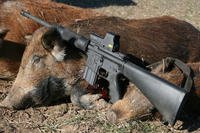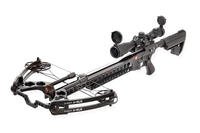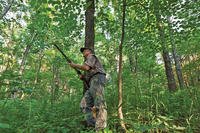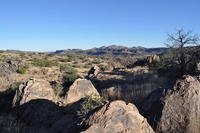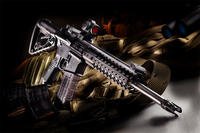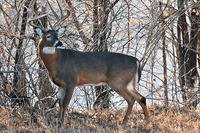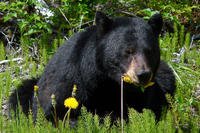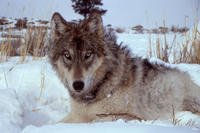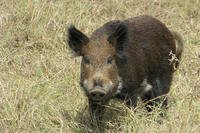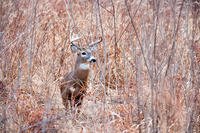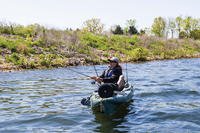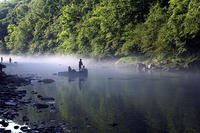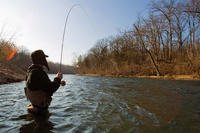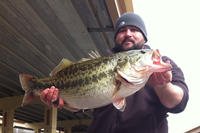From high mountain forest to rolling prairie land, Wyoming offers great predator action — no hunting license required.
by Cal Taylor
Long known as a premier destination for big game species, Wyoming is probably far less known for its predator hunting, but predators are here and easily accessible. Wyoming is roughly 50 percent public land, much of it arranged in huge tracts where a coyote hunter can call for days on end and never call the same place twice. There are 17.5 million acres of land administered by the Bureau of Land Management (BLM) alone. Add to that the U.S. Forest Service (USFS) lands and state owned public lands, and you can see that it truly is a predator hunters dream.
Maps for USFS and BLM lands are available at most sporting goods stores throughout the state. In many areas predator hunters can also gain access to private lands by simply knocking on doors. There is a huge diversity of terrain and habitat with a great variety of predators big and small. There are high mountain forests to miles of barren deserts and everything in between. There is fantastic predator hunting near most of the larger cities with all amenities available or you can rough it and camp as you go.
Wyoming has very liberal laws concerning animals the state classifies as predators. No license is required and no seasons are in place. However, be very aware of the state’s classifications, or you could find yourself in trouble with our red-shirted game and fish department personnel. In Wyoming, predatory animals are defined as coyote, jackrabbit, porcupine, raccoon, red fox, skunk and stray cat. Along with Idaho and Montana, Wyoming is working towards having a season on wolves in the areas that they are listed as trophy game. Resident and Non-resident licenses are reasonably priced. Animals that might be listed as predators in other states, such as bobcats and badgers, fall under the furbearer listing in Wyoming and require a license and have a set season. Mountain lions and bears are trophy game and require separate licensing with set seasons and a mortality quota.
Night hunting for predators is legal in Wyoming, but with stipulations. It is only legal on private lands with written permission from the landowner. Night hunting is only legal for those animals listed as predators.
Depending on the time of year you can often combine predator hunting with varmint hunting or even a big game hunt. Jackrabbits and prairie dogs abound in Wyoming, but on some public land prairie dogs are off limits. The fall is covered up in big game seasons, with archery seasons beginning as early as August and some rifle seasons running as late as November. Predator hunting can be great right through the big game hunting seasons if you carefully choose your areas to work around big game hunters. Not all areas are open at the same times so with a little planning you can hunt areas that are closed for big game. I have always found that this will help your predator calling success considerably.
Predator numbers in Wyoming may not match areas of the Southwest such as Texas or Arizona, but the hunting can be spectacular. You can tailor your hunt to suit your capabilities and preferences — easily accessible flat lands near public roads to the wildest wilderness hunt you can imagine. Wyoming is the least populated state in the U.S. and less people mean less predator hunters, too. You will find pressured areas near towns and around livestock, but if you are willing to spend a little time you can find your own honey holes with a good possibility that you may be the only one to hunt them.
Most methods of calling work well in Wyoming. The only considerations are the vast spaces and the wind, both of which Wyoming has plenty of. Call volume in big country can be a concern, so I highly recommend open reed calls or e-callers such as the FoxPro FX series with the additional SP55 external speaker. You might not need all that volume first thing in the morning, but by 9 a.m. you’ll have a substantial amount of wind to deal with. Wide-open spaces also mean not as many close encounters. Often predators will stall out or circle downwind while still several hundred yards away, so a flat shooting rifle with good optics works best.
My granddad had an old saying that if you always had a fast horse, you could ride him slow if you chose to, but if you had a slow horse the reverse wasn't true. I look at rifles the same way. You can still shoot predators at close range with a fast, flat shooting rifle, but a close range rifle will not return the favor on long range shots.
Optics are equally important. I know that in most areas of the country lower powers are favored for predator calling, but I find a variable scope with the ability of going to higher magnifications to be a real asset for longer shots. I have a NightForce NXS compact 2.5 x 10 power that is fast becoming one of my favorites. It also has a lighted reticle for low light situations and night hunting and is one of the best all around predator hunting scopes I’ve found.
I also highly recommend a tall set of bi-pods or shooting sticks. The extra stability really helps with long-range shots and due to grass and sage, shooting prone isn't always an option. Wyoming predator caller Vern Howey makes one of my favorites. Vern’s sticks are available through AllPredatorCalls.com.
An important consideration with any outdoor activity in Wyoming is always the weather. We have four seasons and hunt all of them. They’re distinctly different, yet overlap in ways that will have you shaking your head in wonder. These drastic changes can be instantly dangerous and at times downright deadly. More than one unprepared hunter has perished at the hands of the unpredictable weather of Wyoming. Blizzards, tornados, hail and lightning storms are all possible depending on the time of year, and all can be potentially life threatening. Come prepared. Four-wheel drive isn't an option for a predator hunter in Wyoming, it is a necessity. Numerous other items such as a winch, tire chains, and shovels are also highly recommended. When you need these items, you really, really need them!
ATVs and UTVs are also usable in most areas of Wyoming and can really be an asset. A permit for travel on public lands for ATVs is available at a reasonable price from any of the ATV dealers statewide.
A basic survival kit including extra food, blankets and a first aid kit is also a necessity. Many areas in Wyoming are just simply remote. You may be miles from the nearest town and cell phone coverage here is spotty at best. There are vast areas between towns even if you are on the most traveled roads in the state.
No matter how you pack, you can't have too many clothes, gloves and shoes. You may be hunting in a T-shirt one day and wool clothes and snow packs the next. If you want to come for some spectacular predator hunting, you will find yourself welcome in the vast majority of the state, but come prepared — and enjoy.
